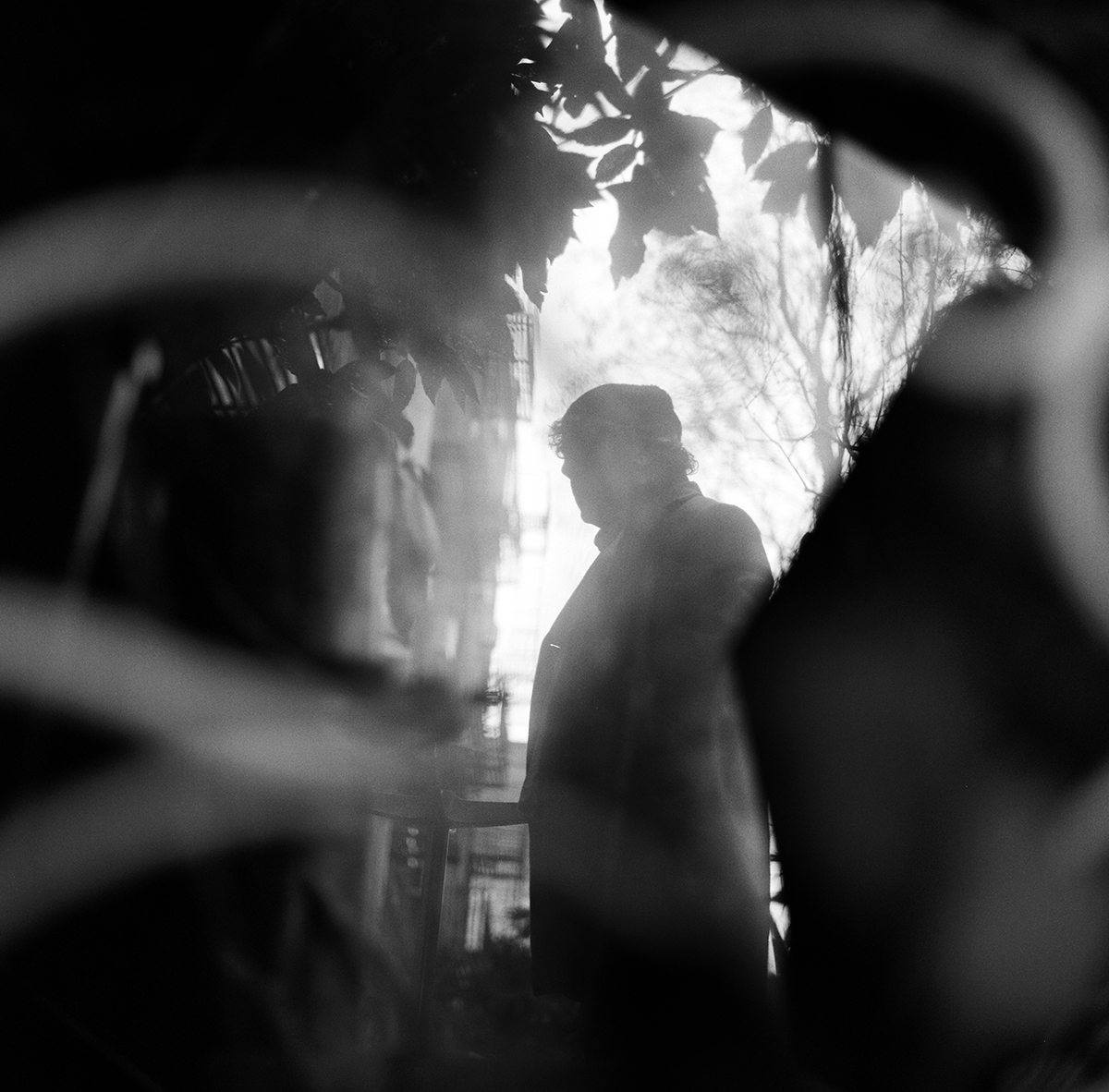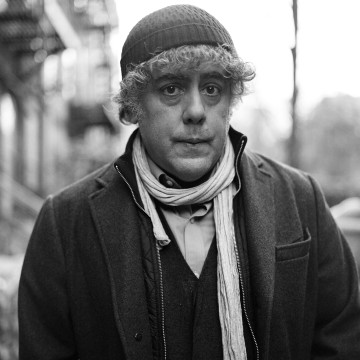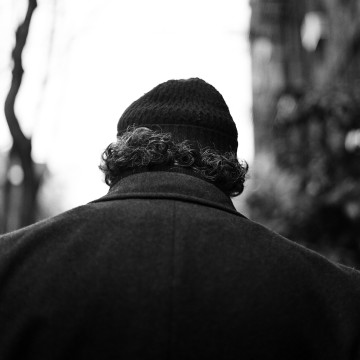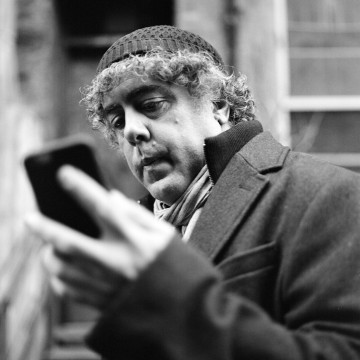Ron Haviv
Ron Haviv is an Emmy nominated and award-winning photojournalist and cofounder of the photo agency VII, dedicated to documenting conflict and raising about human rights issues around the globe. His first photography book, Blood and Honey: A Balkan War Journal, was called “One of the best non-fiction books of the year,” by The Los Angeles Times and “A chilling but vastly important record of a people’s suffering,” by Newsweek. His two other monographs are Afghanistan: The Road to Kabul and Haiti: 12 January 2010. Haviv has produced an unflinching record of the injustices of war and his photography has had singular impact. His work in the Balkans, which spanned over a decade of conflict, was used as evidence to indict and convict war criminals at the international tribunal in The Hague. President H.W. George Bush cited Haviv’s chilling photographs documenting paramilitary violence in Panama as one of the reasons for the 1989 American intervention. Haviv is the central character in six documentary films, including National Geographic Explorer’s Freelance in a World of Risk, in which he speaks about the dangers of combat photography, including his numerous detentions and close calls. He has provided expert analysis and commentary on ABC World News, BBC, CNN, NPR, MSNBC, NBC Nightly News, Good Morning America and The Charlie Rose Show.
[soundcloud url=”https://api.soundcloud.com/tracks/188499779?secret_token=s-kECB2″ params=”color=570000&auto_play=false&hide_related=false&show_comments=true&show_user=true&show_reposts=false” width=”100%” height=”166″ iframe=”true” /]About the Lost Rolls
Nearly every photographer who worked during the analog age ended up, at some point in their life or career, with a bag of stray rolls of film. Orphans. Lost. Thirty-six frames of mystery. These rolls represented the odd range of what was possible as a film photographer. Black and white high speed, slow speed, color transparency, color negative, 35mm, 120mm, 220, tungsten and even C-41 black and white.
When low on film or money a photographer might shoot a partial roll, rewind it, but leave the leader of the film out so that the roll could be reloaded at some future point and finished off. Often times that partial roll, again due to lack of funds or lack of memory about exactly what was on that particular roll caused the shooter to toss it into the lost pile. Tucked away in an old gear bag, in a closet or even in the refrigerator, these lost film piles would continue to grow, some to legendary proportions.
Most photographers threw these lost rolls of film away. I know because many of my colleagues and friends know I’m still a film fan, and I prefer to use film for most of my work, so when they find their stray rolls they typically also find their out-of-date, expired, unused film and call to ask if I want it.
The conversation typically revolves around their hanging on to film as long as they could, their subsequent fall into digital and their regret for not doing anything with the film they were about to throw away. Their giving up became my reward.
Ron didn’t throw his film away.
Based on the “analog” data attached to the rolls, meaning what was written on the canisters in Sharpie, the film dated back as far as 1990 and the famine in Somalia. As for how recent the “newest” rolls were it was a mystery, but his best guess placed his last film rolls around the 2001 timeframe. (He was wrong.) Turns out there are rolls from 2012.
The second unknown was what condition the film would be in after being kept in “closets, next to heaters.” Film has legendary archival characteristics, so I felt there was a good chance there would be recognizable images, but also knew that latent image keeping properties varied from film to film. Processing the film was a risk, but one that seemed acceptable. The creative industry talks about risk, but failure is no longer viewed as a commendable adventure. The world is too perfect now, but we were lucky because perfect was not something we were after.
What we were after, we found. Magic. Pure magic.
Northern Ireland riots, gangs in El Salvador, friends, Kosovo, family, China, Arafat, girlfriends, Iraq, photographers, advertising, refugees, Bill Clinton, Bob Carey, Al Gore and a wild mix of lost memories that forced Ron to sit quietly while doing mental detective work.
But there was more. The film wasn’t perfect. In fact the film was, in some cases, massively flawed. But it was BEAUTIFUL. A blend of mold, pooling dye, time and fog, the film had transformed into one-of-a-kind analog artwork representing some of the most important stories in recent history.
This is not a story about “look at how great my images are.” This is a story about the film era, the life of one of the most important conflict photographers in American history and the story of someone who didn’t throw this history and these moments away.
This story, and the reality of lost film, also hits home for countless other people who still have bags of lost rolls darkening the corners of their house, attic, etc.
The Lost Rolls is edited by Robert Peacock, with essays by W.M. Hunt, Dr. Lauren Walsh and Ron Haviv.
W.M. “Bill” Hunt is a photography collector, dealer, writer, teacher, judge, curator, fundraiser, and consultant… everything but photographer. He loves photography. It changed his life; it gave him one.
Dr. Lauren Walsh is a professor and writer. She teaches visual culture studies at NYU and The New School in New York City. She is co-editor of The Future of Text and Image (2012), and has published with the Los Angeles Review of Books, the “About Images” series of Nomadikon: The Bergen Center of Visual Culture, Photography and Culture, and the Romanic Review, among others. She holds a PhD from Columbia University.
Robert Peacock, project editor, is a content strategist, editor, and producer, specializing in photography and visual storytelling. He has also authored several collections, including Light of the Spirit: Portraits of Southern Outsider Artists (University Press, Mississippi), Sleep: Bedtime Reading, with Roger Gorman (Universe/Rizzoli), and Paradise Garden: A Trip Through Howard Finster’s Visionary World (Chronicle Books).



